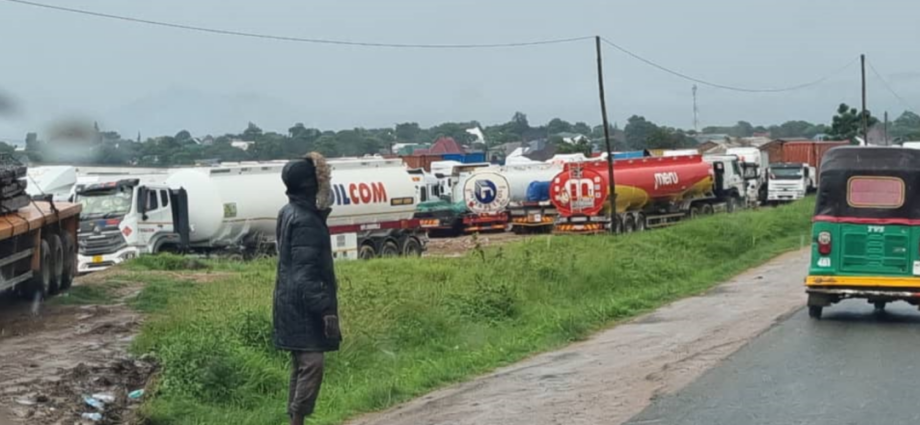The Nakonde Border Post in Zambia, which serves as a vital transit point for goods moving from Tanzania to the Copperbelt region, is increasingly facing severe congestion, disrupting the flow of goods and posing risks to regional trade.
The border, which connects Zambia with Tanzania via the Dar es Salaam Corridor, was once one of the most efficient routes for transporting cargo to and from the Copperbelt, especially for mining operations in Zambia and the Democratic Republic of the Congo. However, it has become a hotspot for gridlock, with trucks now waiting for up to three days to cross, compared to the previous one-day travel time from port to border.
The delay is primarily due to a decision by the Zambia Revenue Authority (ZRA) to implement mandatory cargo scanning at Nakonde, a move that has contributed to a significant build-up of trucks. The outdated scanning equipment, which includes a 15-year-old gantry scanner, can only scan two trucks per hour and requires an hour to warm up each time it is switched on.
An anonymous source close to the situation shared with Freight News that this slow processing time is exacerbated by the limited working hours of scanner personnel, who only operate the equipment for a few hours a day, resulting in a growing backlog. As a consequence, trucks are being forced to park in informal truck yards, especially in Tunduma, on the Tanzanian side of the border, creating a safety hazard, particularly for tankers carrying hazardous cargo.
In Tunduma, it is estimated that around 1,000 trucks are waiting to cross into Zambia, many of which are carrying flammable goods and parked in areas without adequate facilities for the drivers. This unsafe situation has prompted concerns, especially considering the lack of proper parking infrastructure.
Further complicating matters, the Nakonde Border Post upgrades, funded by the UK at a cost of £7.1 million, have not sufficiently addressed the need for additional truck parking spaces. While the improvements aim to modernize the border post, they have not alleviated the severe congestion or created sufficient space for the trucks queuing to cross.
TradeMark Africa (TMA), which is working with the Zambian government on the Nakonde upgrades, emphasized that the project aims to reduce truck dwell times from 64 hours to less than 10 hours, improving efficiency and reducing losses for businesses. However, the current delays indicate that the border post is still far from achieving its intended goals of facilitating smooth trade and regional commerce.
As it stands, the congestion is proving to be a significant challenge for businesses, especially those in the mining sector, as delays disrupt the timely delivery of essential materials. It is clear that while upgrades are underway, more immediate solutions are needed to address the current gridlock and ensure the efficient movement of goods through the Nakonde Border Post.




